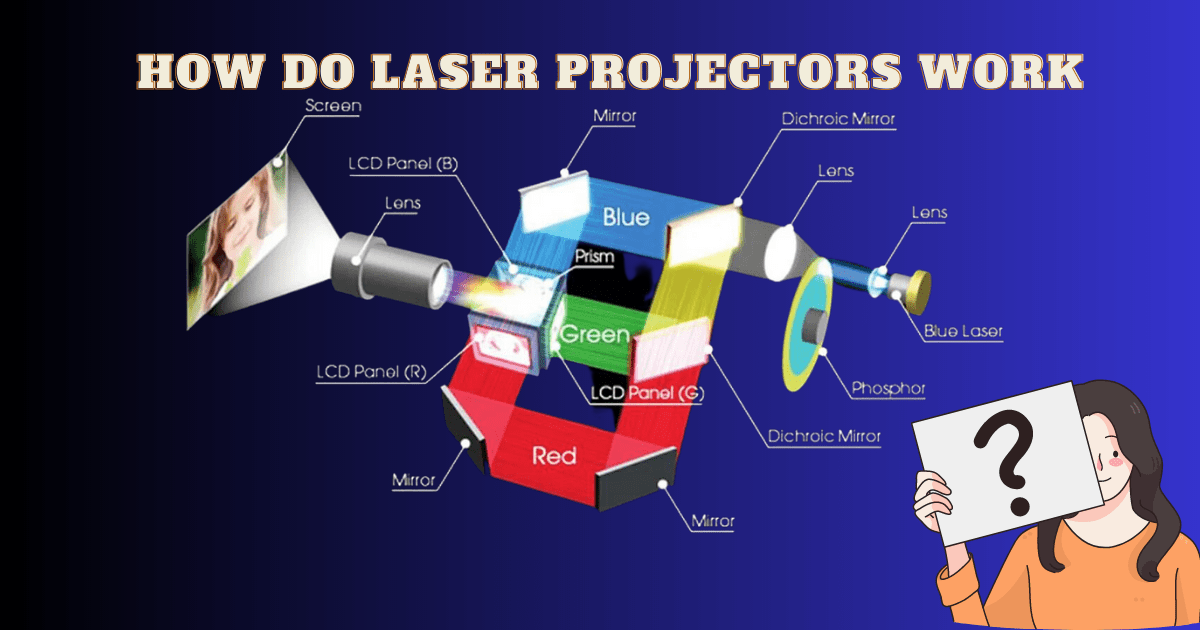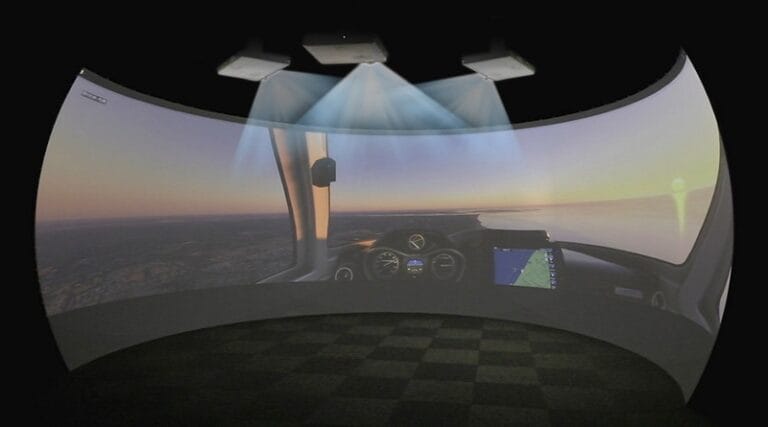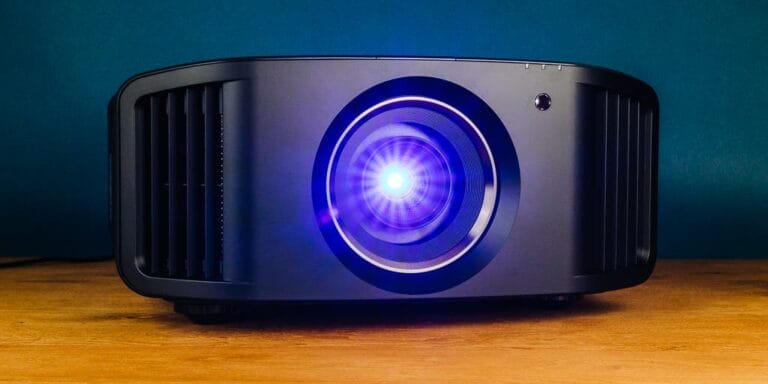
Welcome to the fascinating world of laser projectors! Have you ever wondered how these impressive devices work? Well, let’s start by diving into the cooling system of a laser projector.
So, you’re probably wondering, “How does the cooling system of a laser projector work?” Great question! The cooling system in a laser projector plays a crucial role in keeping the device running smoothly and efficiently.
Now, you might be thinking, “But why does a laser projector need cooling?” Well, lasers generate a substantial amount of heat during operation, and excessive heat can damage the delicate components inside the projector. That’s where the cooling system comes to the rescue!
Get ready to explore the inner workings of the cooling system and discover how it keeps the laser projector cool and ensures optimal performance. Let’s jump right in!

How Does the Cooling System of a Laser Projector Work?
Laser projectors have become increasingly popular in recent years, offering enhanced image quality and brightness compared to traditional lamp-based projectors. One crucial component of a laser projector is its cooling system, which plays a vital role in maintaining optimal performance and prolonging the lifespan of the device.
In this article, we will explore the intricacies of how the cooling system of a laser projector works, from heat dissipation to thermal management techniques.
The Importance of Cooling in a Laser Projector
A laser projector generates a significant amount of heat during operation, especially in the laser source and its associated electronics. This heat can adversely affect the internal components of the projector and compromise its performance and reliability.
Therefore, an efficient cooling system is essential to dissipate this heat and maintain the projector’s optimal operating temperature.
The cooling system of a laser projector typically consists of various components, including heat sinks, fans, and thermal management techniques such as heat pipes or liquid-cooling solutions.
The primary goal of these components is to transfer and dissipate the heat generated by the laser source and electronics, ensuring that the projector operates within a safe temperature range.
Heat Dissipation Techniques in Laser Projector Cooling Systems
1. Heat Sinks: Heat sinks are commonly used in laser projectors to absorb and dissipate heat. They are typically made of aluminum or copper due to their excellent thermal conductivity.
The heat generated in the laser source and other components is transferred to the heat sink through direct contact or thermal pads and then dissipated into the surrounding air through natural or forced convection.
2. Fans: Fans are another essential component of a laser projector’s cooling system. They facilitate airflow and help dissipate heat from the heat sinks or other heat-generating components.
By circulating air over the heat sinks, fans enhance the cooling efficiency and prevent overheating. Advanced laser projectors often employ multiple fans with variable speed control to optimize cooling performance.
3. Heat Pipes: In some high-end laser projectors, heat pipes are used for thermal management. Heat pipes consist of sealed copper tubes filled with a small amount of working fluid.
When the heat pipe is subjected to heat, the fluid vaporizes, absorbing the heat and transferring it to the cooler end of the pipe. At the cooler end, the vapor condenses back into liquid, releasing the heat. This cycle continues, effectively transferring heat away from critical components.
4. Liquid Cooling: Liquid cooling involves circulating a coolant liquid through the laser projector’s components to absorb and dissipate heat. This technique is more efficient than air cooling and is often used in high-power laser projectors where heat dissipation requirements are more significant.
Liquid cooling systems utilize specialized pumps, radiators, and heat exchangers to manage heat transfer.
Benefits of an Efficient Cooling System in Laser Projectors
An efficient cooling system in a laser projector offers numerous benefits:
1. Improved Performance: Maintaining optimal operating temperatures ensures that the laser projector operates at its peak performance level, delivering vibrant colors, sharp images, and consistent brightness. Heat-related issues such as color distortion or reduced image quality are minimized.
2. Extended Lifespan: Heat is one of the primary factors affecting the lifespan of electronic devices. With a robust cooling system, a laser projector can avoid excessive heat buildup, which can lead to component failure and reduced longevity.
3. Reliability and Stability: A well-designed cooling system keeps the projector’s internal components within safe temperature limits, reducing the risk of thermal damage or sudden system failures. This enhances the overall reliability and stability of the projector, making it suitable for prolonged use.
4. Energy Efficiency: Proper cooling can increase the energy efficiency of a laser projector by reducing the need for the device to work harder to maintain optimal temperatures. This can result in lower power consumption and reduced operational costs.
In conclusion, the cooling system of a laser projector plays a critical role in maintaining optimal performance, reliability, and longevity of the device.
By effectively dissipating heat generated by the laser source and electronics, the cooling system ensures stable operation and enhances the overall user experience.
Whether through heat sinks, fans, heat pipes, or liquid cooling solutions, a well-designed cooling system is essential for a high-quality laser projector.
Key Takeaways: How Does the Cooling System of a Laser Projector Work?
- The cooling system of a laser projector keeps the internal components cool.
- It uses fans to blow air over the components, helping to dissipate heat.
- Heat sinks are also used to absorb and disperse heat from the laser light source.
- The cooling system is essential for preventing overheating, which can damage the projector.
- Regular maintenance and cleaning of the cooling system are important to ensure optimal performance.
Frequently Asked Questions
Curious about how the cooling system of a laser projector works? We have the answers to your questions right here! Read on to understand the ins and outs of this fascinating technology.
How does the cooling system of a laser projector prevent overheating?
The cooling system of a laser projector prevents overheating by utilizing a combination of techniques. First, it relies on heat sinks, which are designed to efficiently dissipate heat away from the laser module.
These heat sinks are made of materials with high thermal conductivity, such as aluminum or copper, that effectively absorb and transfer heat. Additionally, the cooling system may employ fans or liquid cooling to further assist in heat dissipation.
By constantly monitoring the temperature of the laser module, the cooling system can adjust the speed of the fans or the flow of the cooling liquid.
This ensures that the temperature stays within safe operating limits. The cooling system acts as a safeguard, preventing excessive heat from damaging crucial components and maintaining the performance and longevity of the projector.
What is the role of a heat pipe in the cooling system of a laser projector?
A heat pipe is an important component of the cooling system in a laser projector. It is a sealed tube that contains a small amount of special fluid, such as water or ammonia.
The heat pipe helps in transferring heat from the laser module to the heat sinks more efficiently. How does it do that? Well, when the heat pipe is exposed to heat at one end, the fluid in the pipe evaporates and turns into vapor. This vapor then travels to the cooler end of the pipe, where it condenses back into liquid form, releasing the heat in the process.
The heat pipe’s ability to transfer heat rapidly and efficiently is due to the phase change of the fluid inside it, which allows for effective heat transfer without the need for any external power source. By incorporating heat pipes into the cooling system, laser projectors can handle higher power levels while maintaining optimal temperature conditions.
Can you explain how liquid cooling works in the cooling system of a laser projector?
Liquid cooling is a method used in the cooling system of a laser projector to effectively dissipate heat. It involves circulating a liquid coolant, such as water or a specialized liquid, throughout the projector.
The coolant absorbs heat from the laser module and carries it away, resulting in efficient cooling. Liquid cooling is particularly useful in high-power laser projectors where air cooling alone may not be sufficient.
The liquid coolant flows through a closed-loop system, which typically consists of tubes or channels that carry the liquid to and from the laser module.
To enhance the cooling process, the liquid may pass through a heat exchanger, which allows it to exchange heat with the surrounding air or another cooling medium. Liquid cooling offers better thermal conductivity than air cooling, making it an effective solution for managing heat in laser projectors.
Are there any maintenance requirements for the cooling system of a laser projector?
While the cooling system of a laser projector is designed to be reliable and durable, some maintenance may be required to ensure optimal performance. Regular cleaning of the projector’s air filters is essential to prevent dust and debris from clogging the cooling system and impeding heat dissipation. It is also important to keep the projector’s ventilation ports clear of any obstructions to allow proper airflow for cooling.
In addition to cleaning, it is recommended to periodically inspect the cooling fans and heat sinks to ensure they are functioning properly. If any components are damaged or show signs of wear, they should be replaced promptly.
Following the manufacturer’s maintenance guidelines and scheduling routine professional inspections can help prolong the life of the cooling system and prevent any potential issues.
Can a malfunctioning cooling system affect the image quality of a laser projector?
Yes, a malfunctioning cooling system can have a direct impact on the image quality of a laser projector. When a cooling system fails to adequately dissipate heat, the laser module can become overheated, affecting its performance.
Overheating can lead to unstable output power levels, color inaccuracies, reduced brightness, and potential damage to the laser diodes or other critical components.
In extreme cases, a malfunctioning cooling system can trigger a thermal shutdown mechanism, forcing the projector to shut off completely to prevent further damage.
A properly functioning cooling system is essential to maintain stable and consistent performance, ensuring that the laser projector delivers high-quality images throughout its lifespan.
So, to sum it all up, the cooling system of a laser projector is super important. It helps to keep the laser diodes cool so they can work properly.
This is done by using fans, heat sinks, and sometimes even water. Without the cooling system, the laser projector could get too hot and stop working. Now you know how it works!
In conclusion, the cooling system in a laser projector is crucial for its proper functioning. It prevents overheating by using fans, heat sinks, and water, ensuring the laser diodes stay cool. Understanding how the cooling system works helps us appreciate how these projectors bring us bright and colorful images.






